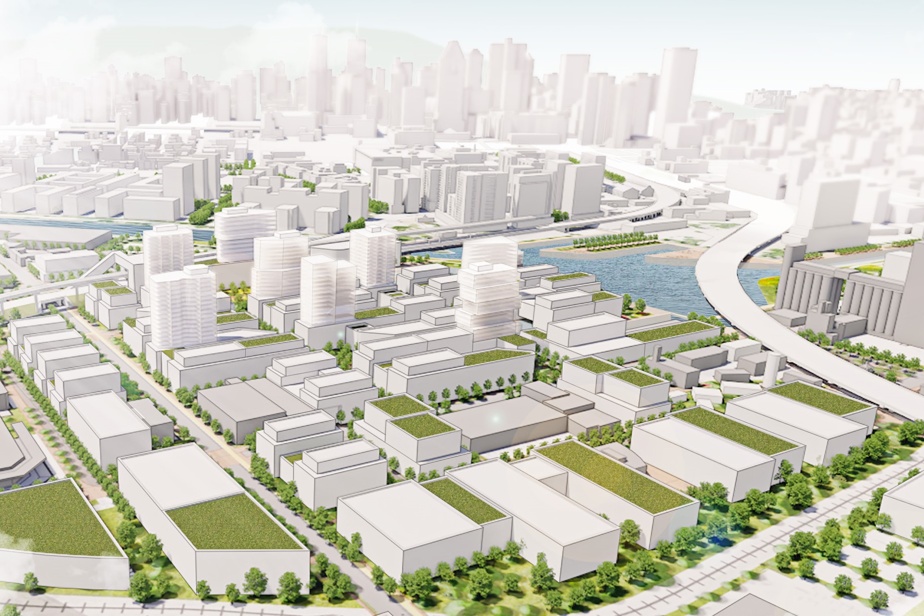A new neighborhood of “at least” 7,600 homes could emerge just south of downtown Montreal if – and only if – CDPQ Infra agrees to add a station to the REM de l’Ouest.
This is the position of the Plante administration, which must approve this Wednesday morning the Master Plan for the Bridge-Bonaventure sector and send it to the municipal council. La Presse was able to obtain the document.
The City foresees the construction of new apartment buildings around Habitat 67, the Silo
This artery will however be insufficient to ensure the mobility of the new residents of this currently landlocked district, according to Robert Beaudry, the elected official in charge of urban planning within the Plante administration.
The addition of a Réseau express métropolitain (REM) station is a “sine qua non” for the development of this sector, he said in a telephone interview. This station should not replace the Griffintown-Bernard-Landry station, whose construction has not yet started, specified Mr. Beaudry. The document includes a map that shows a potential location in the immediate vicinity of the current Costco Bridge.
The Plante administration put forward a neighborhood that would retain its economic vocation – in particular because of the significant presence of the Port of Montreal and CN – while welcoming thousands of households.
Montreal wants to “add as many dwellings as possible, but by [s’]ensuring to have conditions of success for the creation of a complete environment, including economic activities, a living environment, green spaces, etc. “, explained Robert Beaudry. “The harmonious integration of thousands of housing units will contribute to the dynamism of the sector while meeting housing needs and improving services to the population,” added his colleague Benoit Dorais in writing.
The land affected by the plan belongs to many owners, including real estate developers.
The document establishes basic principles to avoid compatibility issues between industries and residences: do not build housing in close proximity to railway tracks, discourage outdoor bulk storage, and provide vegetated buffer zones.
Although it will also be a dense neighborhood close to downtown, Mr. Beaudry rejects the comparison with Griffintown.
Concretely, the new residential buildings would be located mainly in the current industrial sector near the Peel Basin, around Bridge Street. Others would be added on the strip of land which hosts Habitat 67 (la Cité-du-Havre) and on that which hosts the Silo
The Plante administration would like to make the district an example of sustainable development. She wants to develop “approximately 12 km of additional bike lanes” and seven new pedestrian links to overcome currently problematic obstacles – such as a railway line or the Bonaventure Expressway.
She would also like the whole district to be heated and cooled by a single “urban thermal network”. “This type of network can be used to recover heat rejected by a commercial, industrial or technological activity (data center), by an infrastructure (sewers) or to directly exploit renewable sources (hydrothermal energy)”, indicates the master plan.
In the “quadrilateral bounded by Bridge and Mill streets, the Peel basin and the REM [rail]”, the Plante administration foresees a “pedestrian priority zone”, with relatively little private parking and streets closed to cars.
As for the timeline for the completion of the project, it has not yet been precisely defined.
“As of 2024, we could start to make interventions to prepare the ground, illustrates Robert Beaudry. Thereafter, of course, it depends on the reality of the market, when the real estate developers are ready, but also when the developments will be made. »
“It’s a sector that’s going to grow for the long term. It’s a big industry,” he added.

